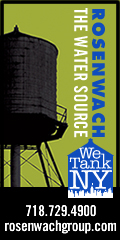 |
July 2015
 |
A Patent Success: GOCO's Charlie Copeland Earns #8955763 for Control Sequence Innovation
In the seven years from its patent pending status to being awarded earlier this year, the control sequence has been helping Manhattan legacy office buildings from the era of the '50s through' 70s save steam demand costs every winter. With installation costs ranging between $7,500 and $15,000, paybacks as short as the winter heating season, automatic daily control and an interface to a building’s BMS or control loop, "8955763" truly is a win-win energy technology. Plus, GOCO gives the control sequence away for free. Like many energy conservation strategies and practices, the control sequence was born out of necessity, since Con Edison’s steam distribution system -- the largest in the world -- was becoming heavily overburdened during peak winter heating days. To limit steam demand, Con Edison implemented a peak winter steam demand charge, much as it does for electricity. However, the utility was required to offer customers strategies to mitigate these high demand charges. Con Edison approached GOCO, which had years of experience pioneering energy solutions and was known for its innovative thinking, to devise a way to reduce peak steam demand. The 'Aha!' Moment The patent control sequence utilizes output from the Con Edison steam meters to manage thermal energy storage. Charlie emphasizes that the automated feature "is essential, since it must be performed daily to avoid a peak demand charge for the month due to inadvertent oversight. The controls have a self-learning feature," he added, "to automatically adjust start-up time based on outside air temperatures." To test the sequence, they "implemented it in several
Vornado properties, and were able to show good results." While the patent was
pending, many building managers, working with their control systems vendors, installed
the sequence operation. |
| BOMA/NY Suite 2201 Eleven Penn Plaza, New York, NY 10001 Ph: 212-239-3662 Fax: 212-268-7441 www.bomany.org |
 |
 "As often happens, the simplest solution turns out to be the
most effective," says consulting engineer and Goldman Copeland Associates, PC
(GOCO)
"As often happens, the simplest solution turns out to be the
most effective," says consulting engineer and Goldman Copeland Associates, PC
(GOCO) 





